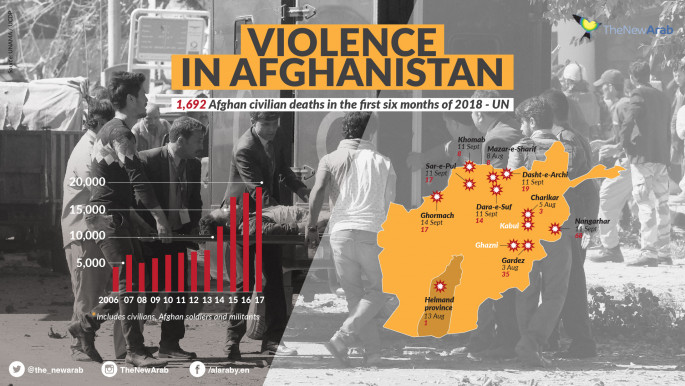US killed 30 civilians in May strikes on Afghan drug labs, UN probe reveals
The United Nations Assistance Mission in Afghanistan (UNAMA) has been carrying out an investigation over the past four months to ascertain what happened on 5 May when the US military raided dozens of sites it had identified as Taliban methamphetamine labs.
Soon after the strikes in Bakwa district of Farah province, and parts of the bordering Delaram district in Nimroz province, UNAMA said it began to receive reports of "significant civilian harm".
In-depth : How high a price is the US willing to pay for peace in Afghanistan?
After a fact-finding mission to some of the impact sites and face-to-face interviews with 21 people impacted by the strikes, UNAMA said it had "verified 39 civilian casualties (30 deaths, five injured and four undetermined), including 14 children and one woman, due to the 5 May air strikes".
The agency went on to say that it had also received "credible information" about an additional 30 deaths - mostly women and children - and was working to further verify these claims.
US Forces-Afghanistan (USFOR-A) blasted the UNAMA findings, questioned the agency's methodology and insisted its "precision" strikes had accurately targeted meth labs.
 |
|
| Click to enlarge |
"In addition to imagery collection during the precision strikes, USFOR–A conducted exhaustive assessments of the facilities and surrounding areas after the strikes," the command said in a statement.
"Combined assessments determined the strikes did not cause deaths or injuries to non-combatants."
Central to the disagreement between the US and the UN is the legal definition of what constitutes a legitimate military target.
UNAMA in its report contended the drug facilities were owned and operated by criminal groups, so "did not meet the definition of legitimate military objectives under international law".
The US, however, insisted the labs were run and owned by the Taliban, who used revenue to "fund ongoing indiscriminate violence against innocent Afghans".
The US military in 2017 and early 2018 carried out multiple strikes against Taliban opium processing plants, but the expensive efforts had little impact on the insurgents' revenue stream and risked alienating rural populations and Afghan farmers, many of whom rely on the poppy crop.
Read more: Surviving Kunduz: Crime and violence swamp neglected Afghan city once hailed as model of governance
The military has since switched its focus to the more lucrative meth industry, suspected to be a new source of income for the Taliban.
Production of the highly addictive stimulant has boomed "exponentially" in recent years in Afghanistan, according to the UN's Office on Drugs and Crime.
Part of the rise is due to the incorporation of a locally-grown mountain bush called ephedra, which makes the production process cheaper and easier.Follow us on Twitter: @The_NewArab





 Follow the Middle East's top stories in English at The New Arab on Google News
Follow the Middle East's top stories in English at The New Arab on Google News


